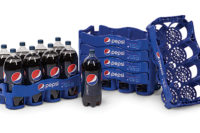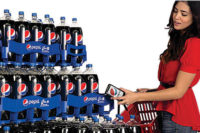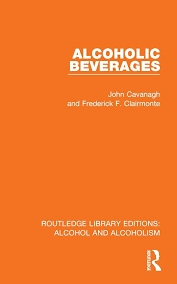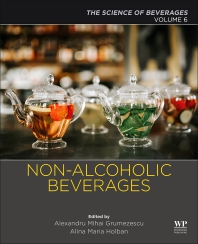Reusable containers double as marketing displays
Repeated use helps justify cost






Ever since My Pillow Pets founder Jennifer Telfer started promoting her now famous “As Seen on TV” product Pillow Pets, her company has stressed the product’s dual purpose as a pillow and a stuffed animal. Dual-purpose products can be attractive to buyers because of their versatility. This, in turn, can offer a cost savings by replacing two items with one. Plus, the investment can be easier to justify when considering the product’s various uses.
Along those lines, reusable packaging systems now are serving dual purposes as transportation cases and retail-ready displays to pass on similar cost savings to their users. “Reusables provide a more cost-effective platform for packaging,” says Trent Overholt, vice president of Rehrig Pacific Co., Los Angeles. Because the reusable displays can be used again and again, the cost of creating the displays can be spread out through the multiple trips, compared with one-time-use displays that are not reused, he says.
In this system, the reusable containers that are designed as secondary or tertiary packaging to store products in a warehouse and distribute them are then used as a display case that can be placed directly on the store floor or shelf. This system eliminates the need for unpacking or repacking, thus increasing productivity and reducing the number of opportunities for damage throughout the supply chain, says David Deal, senior director of marketing at Chep North America, an Orlando, Fla.-based subsidiary of Brambles Ltd.
These retail-ready displays can be utilized by brand owners to heighten their brand awareness, experts note. The reusable packaging systems can be decorated with a company name or logo molded into the design so that they are easily visible to customers and consumers, says Joe Borer, market manager for Buckhorn Inc., Milford, Ohio. This, in turn, helps to generate sales increases, Rehrig Pacific’s Overholt adds.
In fact, floor-ready displays and reusable containers at retail are driving sales increases in Europe, and similar trends are popping up in the U.S. market, Chep’s Deal says. For instance, last fall Chep released a 40-by-24-inch reusable half-pallet designed to assist retailers in reducing the cost to ship, handle and display products from the point of manufacture to the point of sale. In Europe, half-pallets containing bulk items take the place of the two bottom rows of many retail shelves, he says. In the coming years, U.S. retailers might adopt these methods as well, he suggests. In the meantime, the growth of boutique stores and smaller grocers as urbanization increases might drive a need for half-pallet reusable containers in the near future, he says.
Using reusable containers in the store also can show a consumer the brand’s commitment to sustainability, Rehrig Pacific’s Overholt adds. For example, Ifco Systems, a Tampa, Fla.-based subsidiary of Brambles Ltd., found that its reusable containers generate 82 percent less solid waste, consume 92 percent less water, require 49 percent less energy, and lower ozone depletion by 76 percent compared with shipping in display-ready corrugated boxes. From an environmental standpoint, these advantages can make reusable containers an attractive choice for companies, as well as share a message of ecological responsibility with their consumers.
Beyond marketing benefits, reusable containers also can protect products in the store. “Reusable shells dramatically improve product protection, thereby reducing damaged product and unsalables,” Rehrig Pacific’s Overholt says.
A sustainable supply chain
However, reusable packaging systems take on this protective role long before reaching the store. Early in the supply chain, many beverage suppliers use plastic pallets, divider sheets and top frames to securely ship full loads of cans to fillers, explains Bob Klimko, director of marketing at Orbis Corp., Oconomowoc, Wis. “Cans must be dent-free upon arrival at the bottler, so a secure system of pallets, divider sheets and top frames must be used to protect cans,” he explains. Orbis’ new NovaLock Pallet is designed to do just that, he says. It is a lightweight pallet designed for durability and long service life in an application that requires many trips per pallet, he says. This pallet can be combined with Orbis’ divider sheets and top frames to provide maximum protection and load stability, thus creating a more efficient shipping system, he adds.
On the bottling side, preforms are shipped to bottlers and fillers in plastic bulk containers, Klimko says. Further down the line, these plastic bottles are shipped in shells that are designed to fit their specific bottle sizes, he says. These shells are able to protect lightweight bottles from damage, thus allowing beverage-makers to be more sustainable with their primary packaging as well, Rehrig Pacific’s Overholt notes.
After taking beverages through the cycle from pre-production to post-sale, reusable containers are returned to service centers where they can be prepared for reuse. In order to keep this step of the supply chain sustainable, Buckhorn offers its collapsible Caliber 315 intermediate bulk container. This container collapses when empty for efficient use of space during the return trip, Borer says.
Because these packaging systems are reused multiple times to deliver consumables, it is important to ensure that the containers are cleaned and ready for the next user. To assist with this, Buckhorn designed its Caliber 315 to have smooth inner and outer surfaces to allow for easier cleaning, Borer says.
Covering your bases
As the packaging systems are sent around the supply chain, they sometimes can become damaged from improper handling, says Michael Parker, vice president of marketing and strategy for containers at Chep Pallecon Systems, a division of Chep North America. “Damage occurs if users are not properly trained in best handling practices,” he says. “Some examples include forklift error, extremely low [or] high temperatures, and improper racking.”
To reduce forklift error, Buckhorn redesigned its Caliber 315 container for easier handling, Borer says. “There is a center foot on the 48-inch side of the container,” he explains. “On the original design, the foot was set back slightly from the front edge of the base, making it hard to see for the forklift drivers. We moved the foot forward so it is flush with the front edge of the base. Now it is much easier for the forklift driver to see the fork openings, thereby avoiding damage.”
Although accidents happen and cause damage to the containers, overall damage only occurs in a small percentage of cases, Rehrig Pacific’s Overholt reports. The larger problem in the supply chain is loss and theft. “Loss causes range from inconsistent or poorly managed [standard operating procedures], retailers placing them outside in unprotected areas when not recovered in a timely manner by the route drivers, to simply poor asset visibility and not knowing where they are being shipped, thus no reverse logistics are triggered,” he says.
Additionally, because reusable assets are valuable from a material content perspective, these assets are vulnerable to theft, Orbis’ Klimko adds.
To protect the investment in reusable packaging systems and ensure a timely return, companies can use reusable asset management solutions to track the locations of the containers, Klimko says. Currently, assets can either be tracked individually or in bulk, he says. Individual tracking monitors the containers at the individual level, while bulk tracking groups like packages together for tracking and management, he explains. With either type of tracking, the containers can be equipped with identification tags, barcodes or radio frequency identification chips that can be scanned at each point in the supply chain.
Sometimes the technology to track these containers can be expensive, Rehrig Pacific’s Overholt notes. However, the cost of tracking can be spread out across multiple uses, making the investment more practical and enticing, he says.
Looking for a reprint of this article?
From high-res PDFs to custom plaques, order your copy today!











